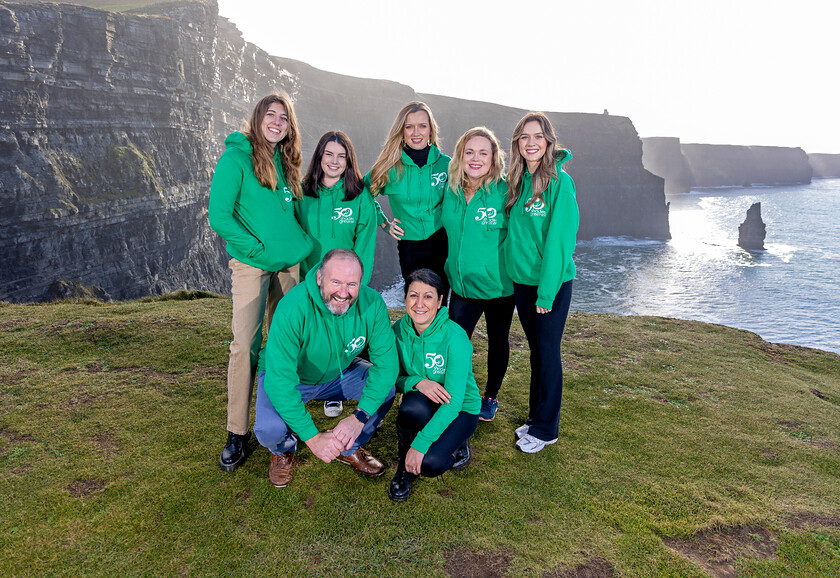SDG 8 - Decent Work and Economic Growth - Sustainable Development
Jul 10, 2023UN SDG 8 main goal is to promote sustained, inclusive and sustainable economic growth, full and productive employment and decent work for all. However, according to the International Labour Organisation (ILO), 28 million were in forced labor in 2021.
In today’s blog, we’ll learn about the current forced labor reality and the meaning of decent work and sustainable economic growth.
Forced Labour – modern slavery behind your favourite brands?
Forced Labour refers to situations in which persons are coerced to work through the use of violence or intimidation, or by more subtle means such as manipulated debt, retention of identity papers, or threats of denunciation to immigration authorities. It is also called modern slavery because it refers to situations of exploitation, where a person cannot refuse or cannot leave because of threats, violence, coercion, deception, or abuse of power. Some important facts to know:
- Women and migrants are more likely to be involved in modern slavery.
- Child labour is still a reality: in 2016, The BBC found children exhausted from working 60-hour weeks and unable to attend school in one of ASOS (online fashion company) factories in Turkey.
- Most cases of forced labour (86%) are found in the private sector.
- Forced Labour is also present in businesses and supply chains of European companies:
In 2022, Ireland banned by law cotton imports from China, as 80% of this material is produced in Xinjiang , a region where a marginalized community, the Uighur, is forced to work in factories and prisons in the region.
In 2020, exploitative labour conditions and abuses were reported in factories in Leicester, UK.
Decent work for all
Employment is a key element in SDG 8 and it’s crucial for economic development, social inclusion, and well-being. However, in some countries, the high rates of unemployment are still a problem: for example, Spain was the European country with the highest unemployment rate in January 2023, with 13 % of the labor force out of work.
But more employment doesn’t necessarily imply well-being and sustainability. The welfare of the employee at work will depend on working conditions and secure employment.
Employees with bad-paid jobs and informal contracts don’t have social protection, safety, or dignity at work. That’s why the roadmap to reach SDG 8 “decent work and economic growth” includes the urgency of including and integrating all informal workers and enterprises into formal economies.
Does economic growth mean sustainability?
The idea of economic growth in capitalist societies is strongly linked to generating more money: a “developed country” is still interpreted as a country that has a large GDP (Gross Domestic Product). In simple words, the richest countries are considered more developed. But this mentality needs to change, because it ignores the negative consequences of economic growth on society, such as climate change and inequalities, and GDP isn’t a measure of human wellbeing.
This graph shows the relationship between the country’s GDP per capita and the country’s emissions per capita in logarithmic scales. It shows the dependence of climate change on economic growth: the largest GDP per capita, the largest emissions. Source: Our World in Data

This graph shows the relationship between the country’s GDP per capita and the country’s inequality of the income distribution in its population. It shows that a large GDP per capita don’t necessarily mean less inequalities between its citizens’ incomes (e.g. United States). Source: Our World in Data
In conclusion, to guarantee a sustainable economic growth, factors like quality of life and wellbeing should be at the core of governments and companies strategies. That’s why social protection systems are key in “sustainable economic growth”.
What would the world look like if SDG 8 was fully implemented?
This world would guarantee decent work and employment for all, meaning that forced labour and high unemployment rates wouldn’t be a reality anymore. Everyone would have a formal contract of employment and be paid accordingly to national wages.
A world that has sustainable economic growth is one where all the population have affordable access to essential social services in areas of health, water and sanitation, education, food security, and housing.
What can we do to assist this sustainable development goal?
Governments should enforce laws and labour inspections and set stronger measures to combat forced labour and trafficking in business and supply chains. In addition, enhance social and legal protection, especially for migrant workers, women, and vulnerable individuals. Strengthen the capacity of domestic financial institutions to encourage and expand access to banking, insurance and financial services for all.
Businesses are highly linked to this SDG as they have the responsibility to:
- Ensure that modern slavery isn’t present in any of our value chain activities.
- Promote ethical recruitment and greater support to the most vulnerable communities.
- Protect labour rights and foster safe and secure working environments.
- Offer decent work for all women and men, including for young people and persons with disabilities, and equal pay for work of equal value.
And what about us as individuals?
- Be a conscious consumer – if something is cheap it is likely to be hurting people or the planet in some way. That’s why it’s important to educate yourself on working conditions in other countries and business practices.
- Know your rights at work and advocate for social corporate responsibility
Read “170 Actions to Combat Climate Change” from UN here.
Lead the Charge for Ethical Growth
Are you ready to integrate ethical practices and drive sustainable economic growth in your organization? Our ESG Leader Programme equips you with the tools to align your business strategies with global standards for fair labor, economic inclusion, and environmental responsibility. Don’t miss your chance—enroll today for the next cohort!
Thank you for reading today.
The Fifty Shades Greener Team 💚

Stay connected with news and updates!
Join our mailing list to receive the latest news and updates from our team.
Don't worry, your information will not be shared.
We hate SPAM. We will never sell your information, for any reason.

